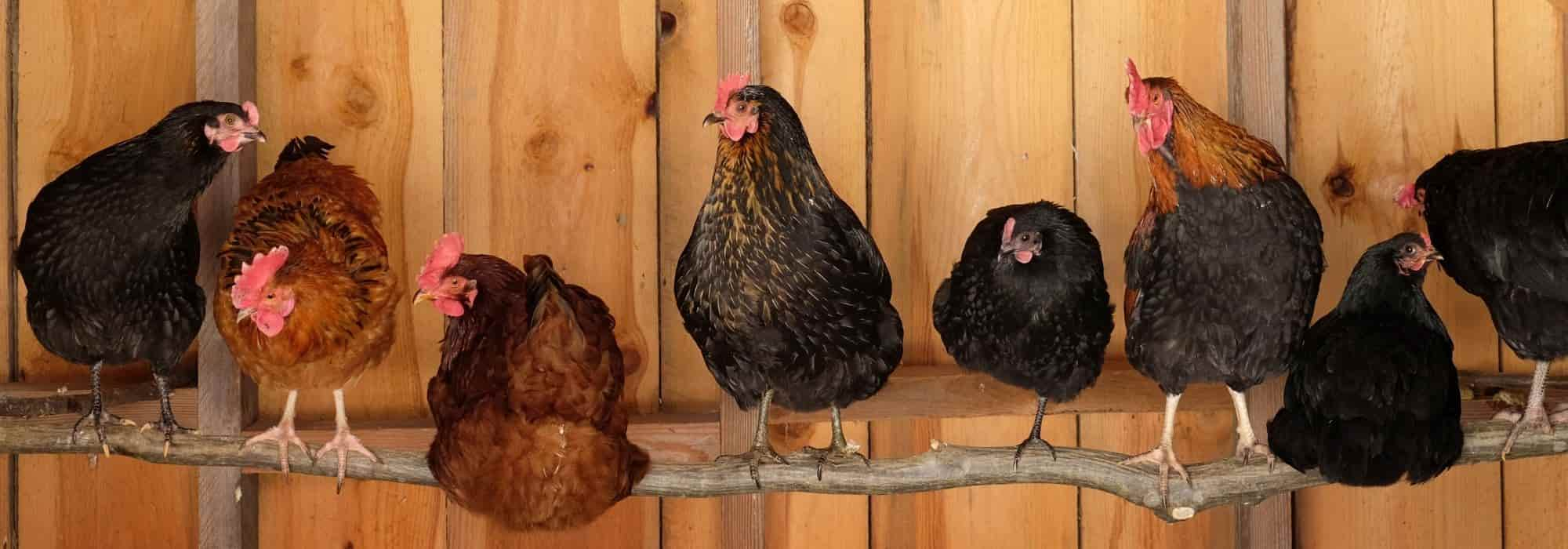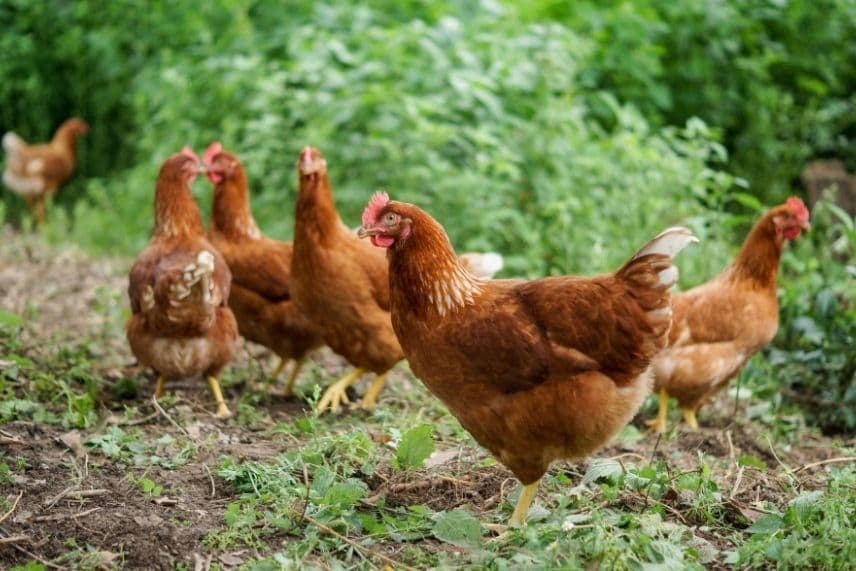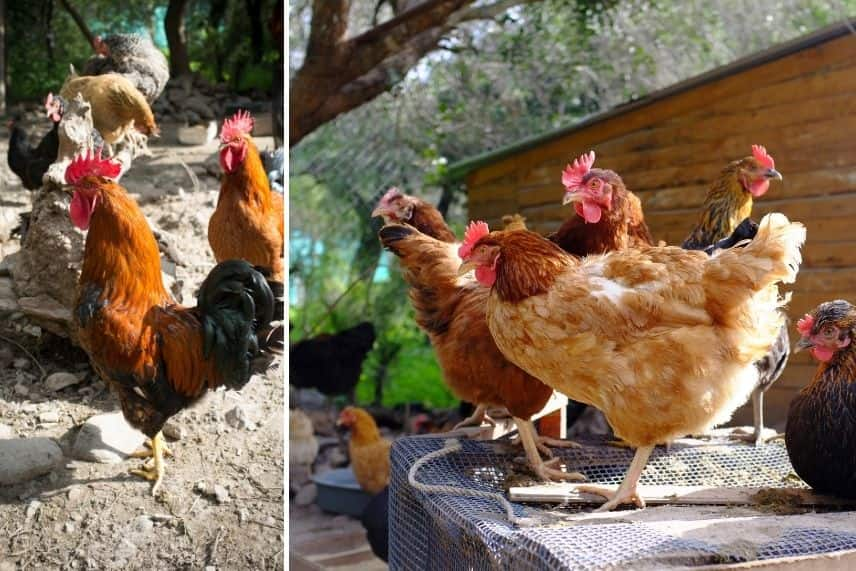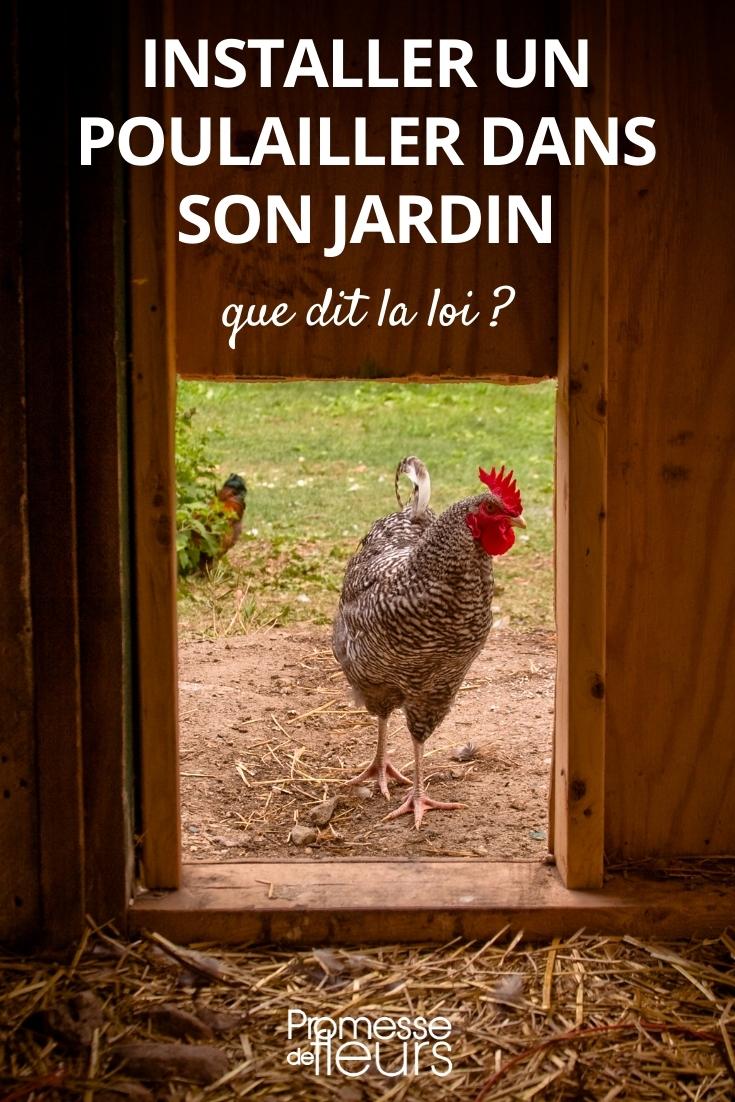
Installing a chicken coop in your garden: what does the law say?
Find all the rules for installing a chicken coop to comply with the law... and your neighbours!
Contents
Do you have a large garden and love animals? Then the idea of adopting chickens has surely crossed your mind. Because a chicken is much more than just a layer that provides you with eggs (almost) every day. A chicken is indeed a sociable animal that will follow you wherever you go, an easy-going and independent creature, and above all, useful as a recycler of organic waste and an tireless assistant in the garden. But where there are chickens, there must be a chicken coop, essential for providing shelter for your future hens. And especially for their well-being and comfort.
However, installing a chicken coop is not a trivial matter, and it is crucial to comply with the laws and regulations in force to avoid any legal issues or neighbourhood disputes. I will attempt to clearly explain all the nuances of the legislation regarding chicken coop installation.
What is a family or backyard chicken farm?
A hen is considered a domestic or companion animal just like a cat or a dog. Therefore, keeping hens is possible for any individual who wishes to do so, provided they adhere to certain common-sense rules!
As an individual, you have the right to own up to 50 poultry maximum for a period exceeding 30 days. By poultry, we mean all birds that can be kept in a backyard. Specifically, one hen or rooster counts as one animal, a duck counts as two, and a turkey or goose counts as three. But let’s focus on hens: if you keep more than 50 hens for over 30 days, you become a professional breeder!

As long as your henhouse does not contain more than 50 hens over 30 days, it is considered a family setup
Moreover, regardless of the number of hens you wish to adopt, their eggs will be reserved for your omelettes and pastries. There is no question of selling them! However, you are perfectly entitled to give them to your friends and neighbours.
Finally, is it necessary to remind you that you are legally obliged to treat your hens properly and not to subject them to mistreatment (Article L214-1, 2 and 3)?
Similarly, due to the ongoing avian influenza, Article 1 of the decree of 24 February 2006 states that “any holder of birds is required to declare them to the mayor of the place where the birds are kept.”
What regulations apply to setting up your chicken coop?
Once you have decided to acquire some hens, it is important to consider the planning regulations for building your chicken coop.
A visit to the town hall is essential
For any chicken coop project, it is advisable to visit the town hall of your municipality. Some rare municipalities indeed prohibit the presence of chicken coops on their territory. Many others, or even communities of municipalities, financially encourage this initiative, primarily to reduce organic waste in bins. Some municipalities are also subject to a PLU (Local Urban Planning) which can influence the choice and size of a chicken coop. If your house is located on a classified site or recognised as a heritage element, you may be subject to specific regulations.
Similarly, if you live in a housing estate or a co-ownership, it is strongly recommended to carefully review the regulations. Again, the installation of a chicken coop may not be tolerated.
Once these steps are completed, you need to decide on the type of chicken coop, its size, and its location. Once again, the regulations differ depending on your choice.
 Whether permanent or wooden, a chicken coop larger than 5 m² must be declared at the town hall
Whether permanent or wooden, a chicken coop larger than 5 m² must be declared at the town hall
Regulations related to the type and size of the chicken coop
The construction of a chicken coop, whether permanent or removable, is subject to the same rules as garden sheds. Generally, and outside of specific PLU, the steps to take depend on the floor area or its footprint.
| Area of the chicken coop | What to do? |
| Area of the chicken coop less than or equal to 5 m² | No declaration necessary |
| Area of the chicken coop between 5 and 20 m² | Prior declaration of works |
| Area of the chicken coop greater than 20 m² | Building permit |
Also remember that, as soon as you make a request for planning permission, prior declaration of works, or building permit, that is to say, for a chicken coop larger than 5 m², you are liable for the development tax, which has been increased since early 2022.
Overall, it is estimated that the interior of the chicken coop, that is to say, the sheltered area where they will lay eggs and sleep, should provide 0.50 to 1 m² per hen, excluding the run. A coop that is too cramped can lead to stress, pecking, and the proliferation of parasites and diseases.
And what about neighbourhood?
If you have good neighbourly relations, it is essential to maintain them! Therefore, initially, it is courteous to inform your closest neighbours of your intention to install a chicken coop. This is a matter of good manners, and it will also allow you to gauge their reaction.
Otherwise, in the minds of many, a chicken coop can lead to nuisances of an olfactory or auditory nature. Thus, your hens should not disturb the tranquillity of the neighbourhood. However, the clucking of hens is considered normal, just like the crowing of a rooster at dawn. It becomes problematic when this crowing is intense and repetitive… In recent years, numerous disputes have been resolved in court during high-profile trials. As for mayors, they are increasingly approached by disgruntled neighbours. This is why a law from the Environmental Code, dated 29 January 2021, now protects and promotes “the sounds and smells of the French countryside.” Regional heritage inventory services are tasked with identifying and qualifying the cultural identity of rural territories, which may be referenced by mayors to defuse potential neighbourly conflicts.
For everyone’s peace of mind, let’s remind novices that a rooster is not necessary for a hen to lay eggs!

Clucking and crowing are considered normal sounds, unless they are intensive and repetitive.
Other nuisances often attributed to chicken coops are olfactory in nature. Unless you place your hens’ droppings in front of your neighbours’ windows, there should be no odour issues as long as you clean your chicken coop regularly. A clean chicken coop does not smell bad! Moreover, it is a matter of hygiene for the well-being and health of your hens. If you wish to use your hens’ droppings as fertiliser, I will explain how to do it.
By placing your chicken coop a reasonable distance from your neighbour’s home, you should encounter no problems. However, be aware that there is no legal minimum distance to respect. But again, common sense should prevail.
Read also
Fodder crop: 5 vegetables for animalsJe suis ici pour traduire des contenus du français vers l'anglais britannique, en respectant les spécificités techniques et stylistiques, tout en garantissant que le texte soit fluide et adapté à un public anglophone.
To prevent your hens from checking if the grass in the neighbours’ garden is greener, take the precaution of installing a run. Indeed, if your hens escape and start pecking at your neighbours’ salads and radishes, you will be liable for the damages caused. Your civil liability may be engaged. Admittedly, it’s not a big deal for a few vegetables or a damaged lawn, but it could be more serious if your hens cause an accident on the public road. In short, it is essential to have a run or a secure fence if you let them roam in your garden.
- Subscribe!
- Contents
































Comments